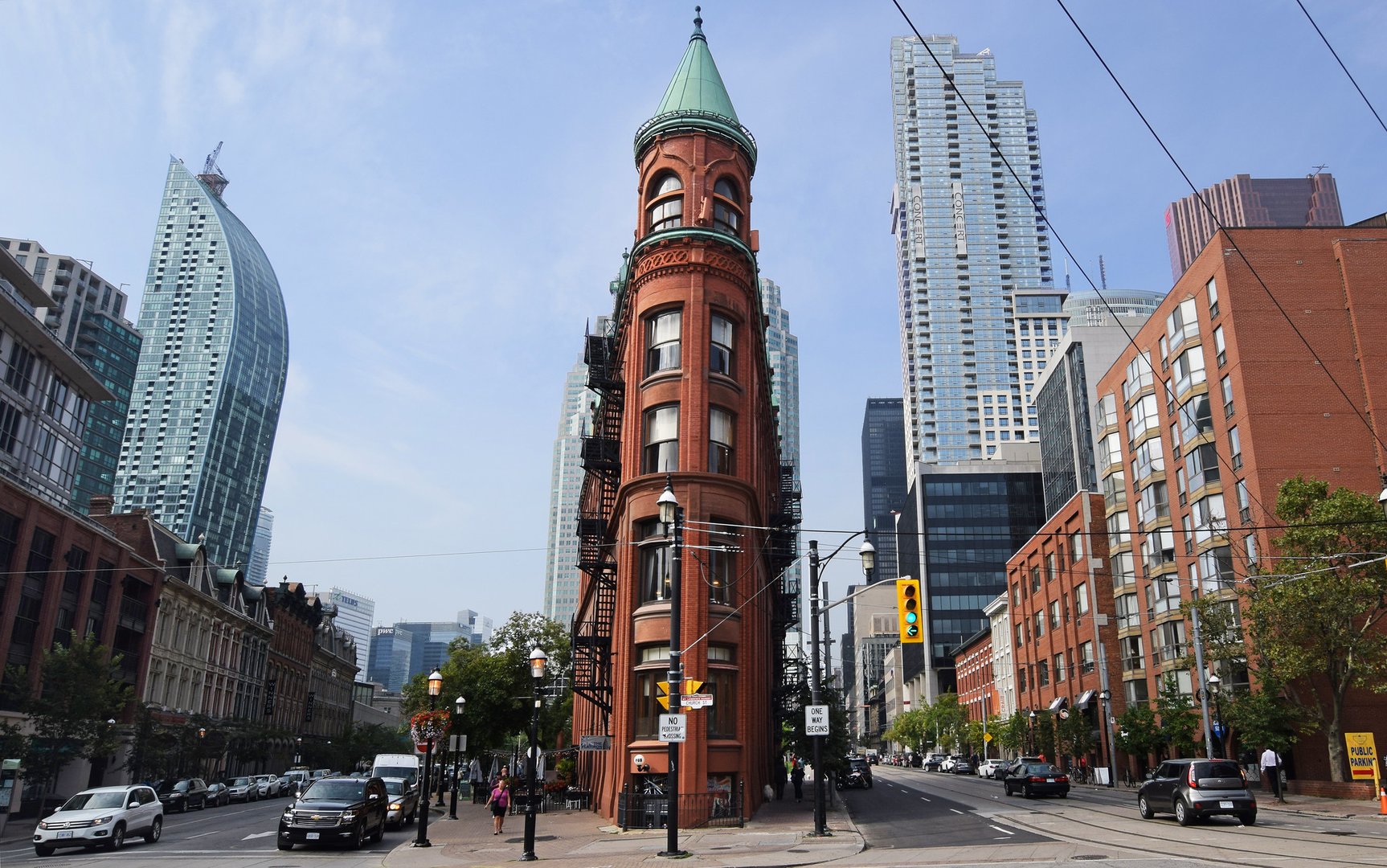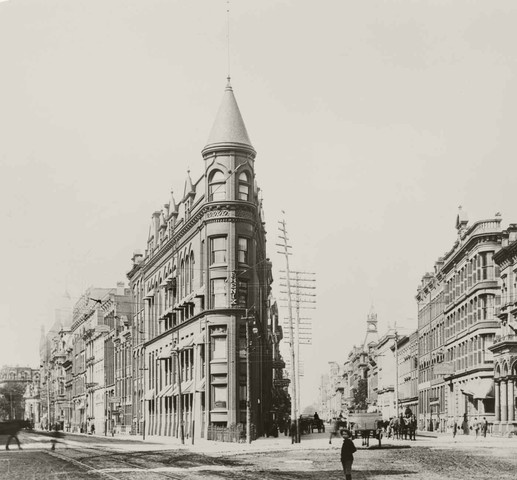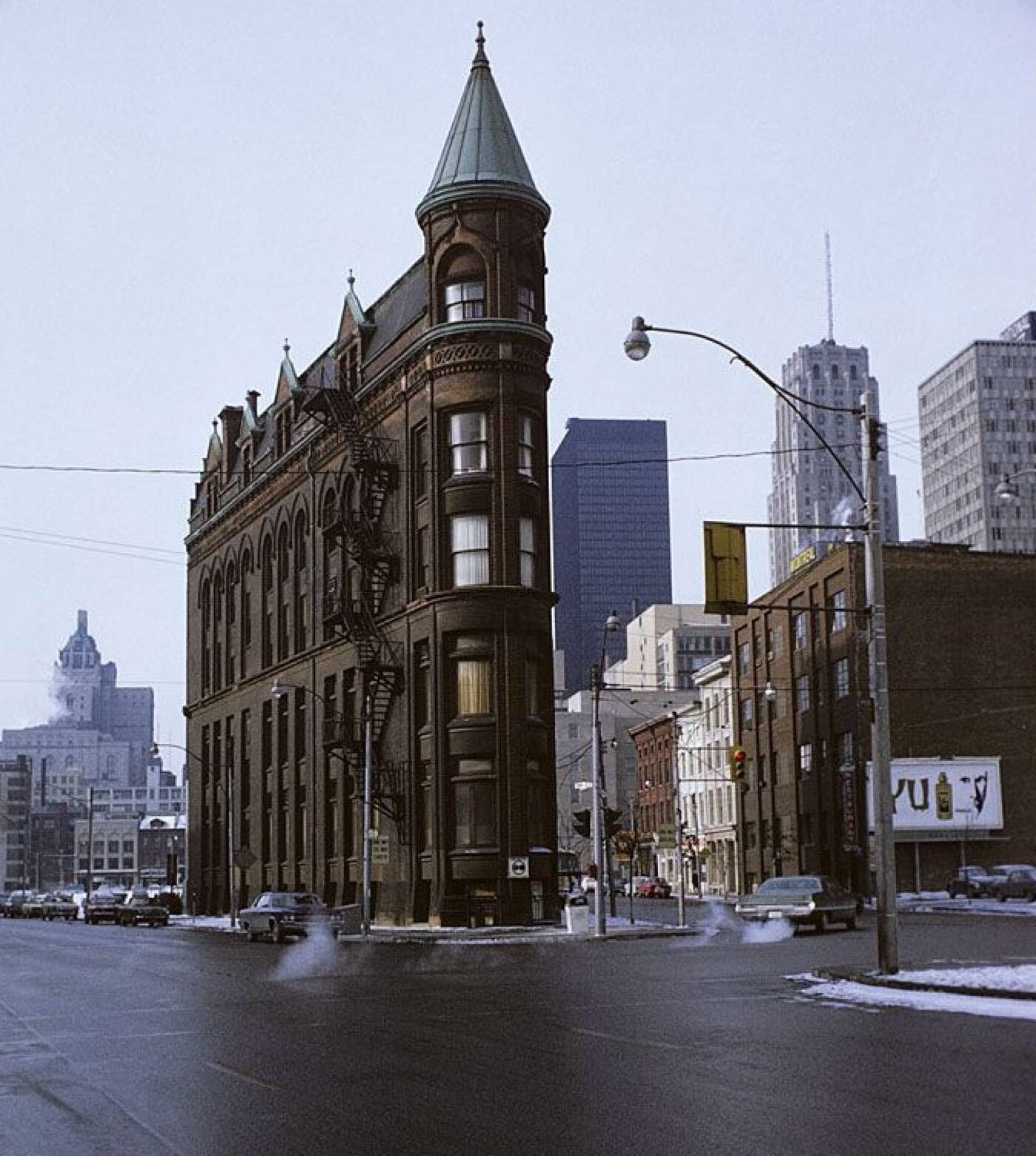Gooderham Building Address: Everything You Need for a Effortless Visit.: How Weather and Close-by Spots Can Enhance Your Trip.
Gooderham Building Address: Everything You Need for a Effortless Visit.: How Weather and Close-by Spots Can Enhance Your Trip.
Blog Article
Discover the Rich History Behind the Gooderham Building in Toronto
The Gooderham Building, an exemplary indication of Richardsonian Romanesque architecture in Toronto, has a storied past that extends beyond its striking red brick frontage. Appointed by the significant Gooderham and Worts distillery in 1891, this building has played a critical function in shaping the metropolitan landscape of the St. Lawrence Market area.

Beginnings of the Gooderham Building
Creating a long lasting legacy, the Gooderham Structure, likewise called the Flatiron Structure, emerged as a sign of Toronto's architectural evolution in the late 19th century. The structure's origins map back to 1891 when it was commissioned by the Gooderham and Worts distillery, one of copyright's biggest distilling business. Made by engineer David Roberts Jr. Gooderham Building address., the framework was uniquely placed at the crossway of Front and Wellington Streets, capitalizing on a triangular lot developed by the convergence of these highways
The building's building utilized neighborhood red block and terracotta, establishing an unique aesthetic that enhanced the burgeoning cityscape. Originally intended to house the Gooderham and Worts workplaces, the building stood for the success of the distillery, which had ended up being a considerable factor to Toronto's economic climate. Notably, the completion of the Gooderham Building coincided with a period of fast urbanization that defined the age.
The establishment of this building gem not just showcased cutting-edge design however also laid the groundwork for future growths in Toronto. Today, it stands as a testimony to the city's rich background and versatility, proceeding to bring in visitors and admirers from around the globe.
Architectural Relevance
The architectural significance of the Gooderham Structure expands beyond its unique flatiron shape, reflecting the innovative spirit of late 19th-century layout. Finished in 1892, the framework exhibits the Richardsonian Romanesque style, identified by its durable stonework, rounded arches, and complex outlining. The bold use different materials, especially the cozy red block and sedimentary rock accents, boosts its visual charm and shows the craftsmanship of the period.
The building's three-story design is notable for its unified percentages and elegant cornice, which add to its famous shape against the Toronto skyline. The narrow great deal on which it stands presented unique challenges, yet the engineers, in this case, designed a structure that made the most of the available room while maintaining aesthetic balance.
Furthermore, the Gooderham Structure is a testimony to the adaptability of architectural design in urban atmospheres. Its long-lasting existence in the middle of modern-day growths illustrates the worth of maintaining historic design as a way of honoring a city's past. Today, it stays a precious landmark, showing both the building patterns of its time and the progressing narrative of Toronto as a vivid metropolitan center.
Role in Toronto's Development
Arising as a principal in Toronto's city landscape, the Gooderham Building added substantially to the city's development throughout the late 19th century. Created in 1892, this renowned towers stood for not only the building passions of the time but also the blossoming economic landscape of Toronto. The structure was originally made to act as a warehouse for the Gooderham and Worts distillery, which was one of the largest distilleries in the British Empire. Its calculated location at the junction of Front and Wellington Streets helped with the movement of items and services, highlighting the location's importance in the city's business activities.
As the city expanded, the Gooderham Structure ended up being a vital component of the St. Lawrence Market location, which was a hub of profession and commerce. In significance, the Gooderham Structure is not just a building landmark; it played a pivotal function in forming Toronto's identity and financial growth during a transformative period in its background.
Social Influence and Heritage
Gooderham Structure's distinct building design and historical significance have actually left an enduring mark on Toronto's social landscape. As one of the city's most recognizable spots, its special flatiron shape and intricate brickwork exhibit the Victorian building trends of the late 19th century. YOURURL.com This structure not only offers as an aesthetic support in the St. Lawrence community but additionally symbolizes the spirit of a blossoming city throughout a period of financial development.
The structure has ended up being an icon of Toronto's abundant history, inspiring local artists and photographers that seek to catch its beauty. Its presence has actually promoted a feeling of neighborhood identification, adding to the narrative of metropolitan advancement. The Gooderham Building has actually played an essential duty in the tourism industry, drawing in visitors anxious to explore its fabled past and architectural charm.
Along with its visual allure, the building encapsulates a narrative of resilience and adaptation, as it has actually transitioned through various usages over the decades - Gooderham Building address. Hence, the Gooderham Structure stands not only as a monument of architectural significance yet likewise as a testimony to the advancing cultural heritage of Toronto

Reconstruction and Conservation Initiatives
Countless reconstruction and conservation initiatives have been embarked on to make sure the Gooderham Structure stays an essential part of Toronto's building heritage. Originally finished in 1892, the building has gone through substantial restorations to resolve architectural concerns while retaining its historic honesty. One of the most noteworthy remediation took place in the late 20th century when the structure was meticulously reconditioned to satisfy modern safety and security criteria without compromising its original design components.
These efforts included repairing the distinctive red-brick façade, restoring the renowned triangular shape, and preserving the complex stonework details. Furthermore, the building's interior has seen cautious updates that respect its historic importance, making sure that initial functions such as wood beams and decorative moldings are preserved.
The Gooderham Building is currently shielded as an assigned heritage residential property under the Ontario Heritage Act, which assists protect it from improper changes. Community engagement has played an essential duty in these conservation initiatives, with local advocacy teams elevating recognition regarding the building's historic importance. Consequently, the Gooderham Building stands not just as a useful room but additionally as a testimony to Toronto's rich building history and sustaining social tradition.
Final Thought

Please visit one of our local supporters - Gamerama And The Repair Store - Iphone Repair Near Me
Report this page